Rooms, chambers, halls, plates, springs—reverb effects come in many flavors, but the goal is usually the same: to enhance a given sound by creating the illusion of space. While you can get some pretty wild sounds out of modern digital reverbs, there’s a special class of devices that can give you utterly unique effects that no algorithm can generate—the actual instruments lying around your house, practice space, or studio.
By playing sounds through a speaker in proximity to an instrument you can get the strings, body, shell, or heads vibrating along to the music. This sympathetic resonance can then be recorded, giving you a track of shimmery, washy, hollow, or downright bizarre acoustic reverberation to use in your mix.
What You’ll Need:
Instrument of choice: Pianos and guitars can add harmonic richness and overtones, drums add body and reinforce fundamental tones, and other instruments such as cymbals, woodwinds, or string instruments can impart unique flavors, changing the original sound’s timbre based on their size and materials.
An audio interface: Just about any audio interface on the market today will do. All you need is at least one line output (monitor, headphone, or auxiliary) and one microphone preamp (preferably with phantom power). Having two of each will make it easier to obtain a stereo effect, but it’s not entirely necessary.
Speaker(s): Powered, full-range monitors are the best option, but in a pinch you could use your stereo system with your audio interface feeding your receiver's aux input. You will need to move the speaker(s) around, so be sure you have enough cable slack.
Microphone(s): Lastly, you’ll need one or more microphones to capture the affected sounds. Large-diaphragm condenser mics are favorable, since they’re good at picking up quiet sources such as sympathetically resonating strings. Feel free to use more than one microphone—matched for stereo or mismatched for different tones.
Since all of these techniques require playing sounds through a speaker and recording a nearby instrument with a microphone, a 100 percent wet signal is going to be impossible to achieve. However, thoughtful speaker and microphone placement will ensure maximum affected sound with minimal bleed from the speaker itself. This way, you can blend the signal to taste in a mix.
It’s crucial to only turn the speaker up loud enough to get the instrument vibrating (it may help to use mechanical vibration by having them lightly touching). With a little practice, you’ll find the sweet spot for a usable result.
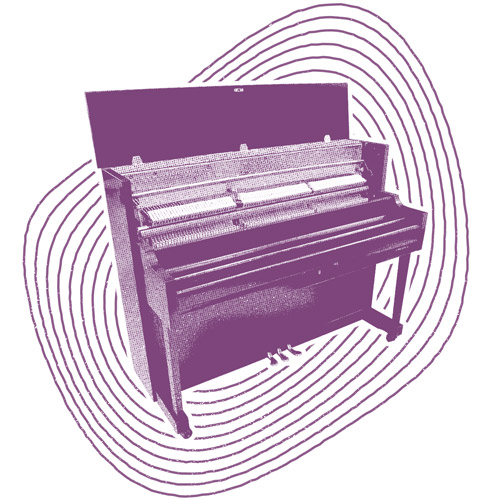
Using Pianos for Reverb
For a harmonically complex stereo effect, the 230 strings on a piano are hard to beat. Simply hold down the sustain pedal with a heavy object and the undamped strings will resonate with the key of the song. For a subtler effect, leave the pedal off and hold down a chord of your choice instead.
For upright pianos, place your speaker 6 to 12 inches from the back, pointed at the soundboard. Open the cover and stick your microphone inside, pointed at the strings. For grand pianos, try laying the speaker on its back under the piano, pointing up toward the bottom (you may want to put it on a footstool or milk crate to elevate it a bit). Open the lid and position your microphone above the strings—close, but not too close.
Using Guitars for Reverb
Guitars will give a similar effect, though, with fewer strings, they’ll add less harmonic content. One advantage, however, is the ability to tune the instrument any way you like it—typically to an open tuning in the key of the song. 12-strings, "Nashville-strung" guitars, mandolins, and banjos will all produce unique variations.
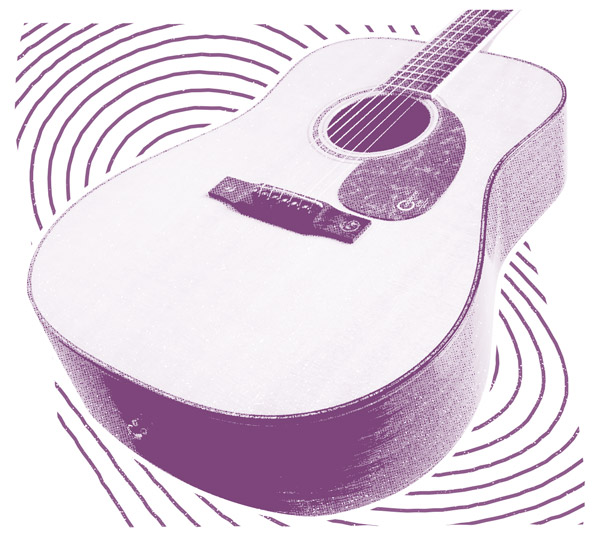
This technique can be done with electric or acoustic instruments.
Acoustic guitars will give you a woody, resonant tone from the body, but isolation will be trickier to achieve (unless you have an acoustic pickup). Put the guitar on a stand and point your speaker at the back, turning it up just enough to get the strings moving. Just like recording a normal acoustic, you can get many different sounds by mic’ing the 12th fret, bridge, body, or soundhole.
With electric guitars, isolation isn’t an issue because you can separate the guitar and amplifier. Put the guitar on a stand again, but this time point the speaker at the strings and turn it up as loud as you can get away with. Set up the amp in a different room and mic it like you normally would. Once you’ve got the instrument singing, try tweaking the amp, adding pedals, or even moving them close together for an eerie feedback reverb.
Using Drums for Reverb
If you’re handy with a drum key you can get some really cool effects out of a well-tuned kick, snare, or tom. The size, type, and tuning of the drum will greatly influence the result you get, but generally drum reverb will contribute a sustained, resonant hum at one fundamental frequency (usually a song’s tonic note) and a few overtones. This effect works particularly well on monophonic instruments, vocals, and—perhaps surprisingly—even drums.
Kick drums can produce the lowest resonances due to their size, but it can be tricky get the right sound. First, set the drum up away from the kit, with the pedal removed. Point your speaker at the batter head and remove any pillows or blankets from the shell.
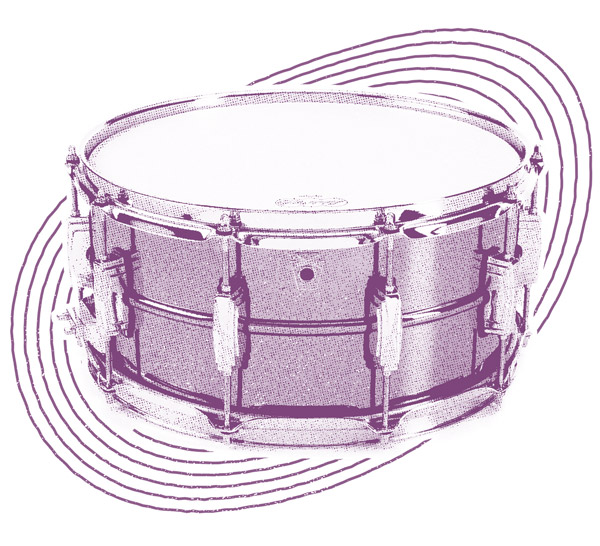
Depending on the type of resonant head (or lack of one), you may be forced to mic the head itself or you may be able to stick a microphone inside. If you do the latter, vastly different sounds can be had by pointing your mic at the batter head, the shell, or back toward the resonant head.
Approach toms similarly, laying them on their side and experimenting with tuning and removing heads. Multiple toms can be tuned to specific intervals, resonating at different parts of a song. Snare drums can be treated the same way, with snares turned off for resonance or on for sizzle. Mic’ing the snare side or the batter side will accentuate or reduce the sizzle.
Using Cymbals for Reverb
Cymbals can be made to resonate as well, contributing a kind of blurry shimmer. This method is one of the trickiest though, since it takes so much acoustic energy to get a cymbal moving and the audible result is so quiet. In order to get a usable effect you’ll have to make shrewd choices in cymbal selection, speaker placement, volume, and mic placement.
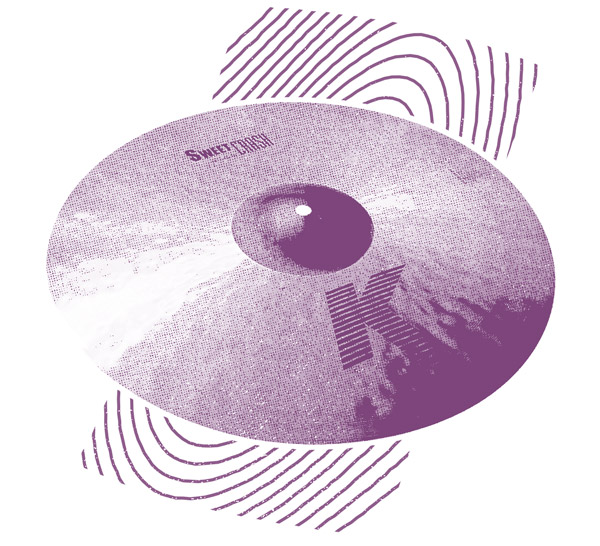
The cymbal itself should be as thin and wide as possible (a light ride is ideal). Thinner cymbals will be more easily excited due to their lower mass, and the increased radius will help isolate the speaker’s direct sound from the microphone. Place the speaker under one side of the cymbal, as close as you can get it (having it touch the stand may help transmit energy).
Place the mic above the cymbal, pointing down at the opposite side. The closer you can get it, the more affected sound you’ll pick up. At a certain distance the low-end will be exaggerated by the proximity effect, which may or may not be useful to you. This will maximize the affected sound and minimize direct bleed from the speaker. The effect will be subtle, but with some tweaking you should be able to get something useable.
Using Orchestral Instruments for Reverb
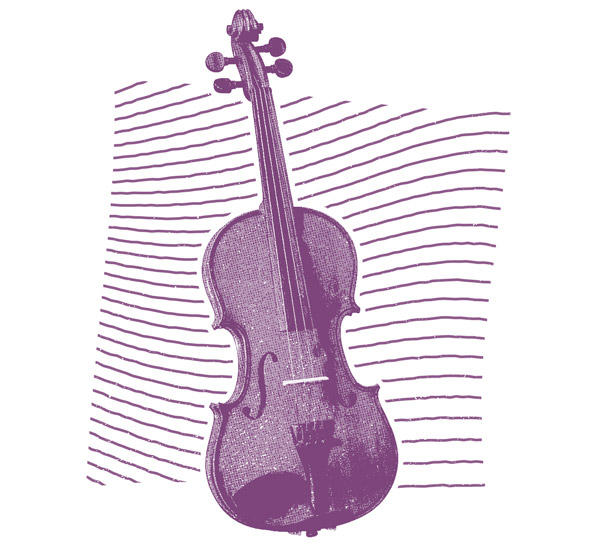
Almost any other acoustic instrument can be turned into an echo chamber with some crafty mic’ing. Take the mouthpiece off of any brass or woodwind instrument and insert a small-diaphragm measurement mic like an Audix TM1 and you’ll get a sort of sonically distorted funnel with different tonal properties dictated by the size and material of the instrument.
Varying the position of the speaker and taping down keys or valves will also affect the sound. If you can fit a small microphone like a lavalier into the f-holes of a violin, viola, or bass (or a guitar, for that matter), you may be able to get a kind of woody, hollow effect.
Now that you’ve learned the finer points of alternative reverb techniques, a world of possibilities awaits you. This list is by no means comprehensive—with an open mind and some clever techniques, almost any instrument can be manipulated into some type of effect. What other ways can you think of using instruments as reverb?
